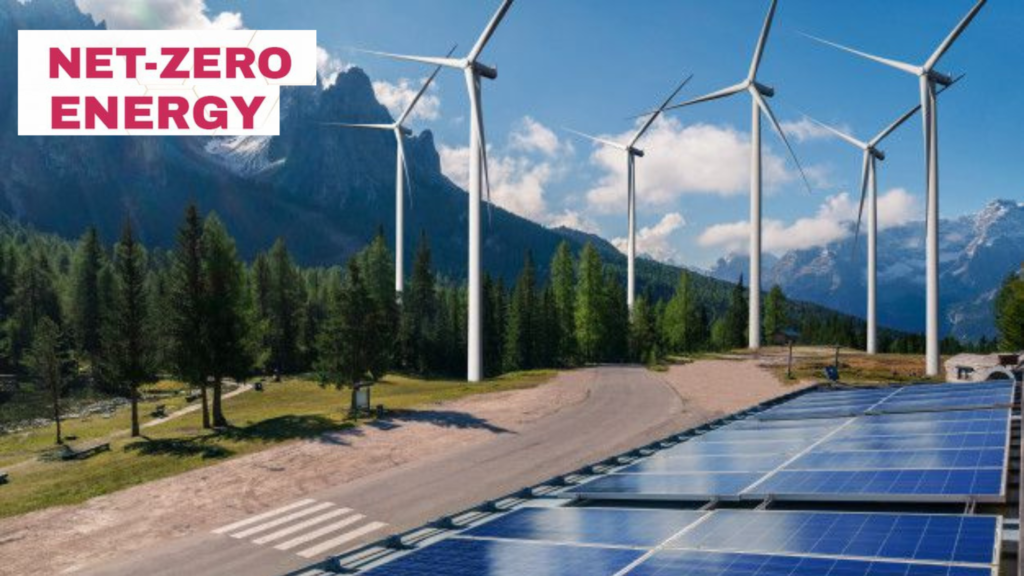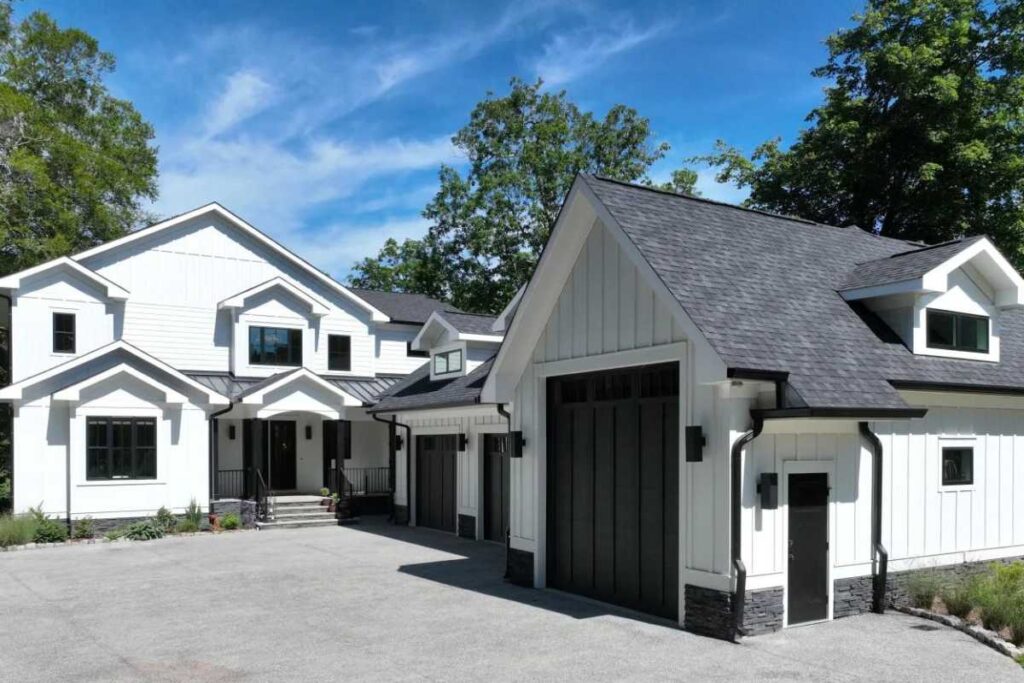Imagine you’re living in a house that uses clean energy, produces no harmful emissions, and is built to help contribute to a more environmentally friendly future; that’s called sustainable living. An example of this energy-efficient home is the $1.1 million zero-emissions home built with advanced technology and environmentally friendly design.
This home isn’t just a sustainable real estate model; it also meets luxury standards and is in line with climate goals set by governments worldwide. This unique home has innovative features like solar panels, high-efficiency insulation, and renewable energy systems that reduce its carbon impact.
But how does it all work, and what makes this home the perfect example for zero-emissions living? Let’s explore, shall we?
Real Estate’s Role in U.S. Climate Goals
The real estate sector significantly influences the U.S. government’s efforts to tackle climate change. According to the Department of Energy, residential and commercial buildings are responsible for 31% of total U.S. greenhouse gas emissions.
This is mainly due to heating, cooling, and powering homes with non-renewable energy sources. The value is higher than that of other economic sectors like agriculture and transportation.

In light of this, the Biden administration has implemented several policies to reduce residential emissions. This is where zero-emission homes come into play. These homes are built to have no carbon footprint by using renewable energy sources like solar and wind power and incorporating energy-efficient systems.
The goal is to build homes for sustainable living that generate as much energy as they use. This move aligns with the climate goals of the Biden administration, which emphasize reducing emissions from buildings as part of a bigger strategy, which is to combat global warming.
The $1.1 Million Zero-Emissions Home
The 5,400-square-foot newly built residence on a large walnut farm in Williamsburg, Virginia, is a perfect example of how luxury and sustainability coexist. It is owned by 33-year-old Morgan Wojciechowski and was built to be completely self-sufficient.
The home generates all of its energy from solar panels installed on the property, stores excess power in an ultra-modern battery system, and uses advanced technology to reduce its environmental impact.

One thing that truly makes it unique is the home’s capacity to run completely off the grid without producing greenhouse gas emissions. Wojciechowski estimated that utility bills would be about $917 annually with solar panels, or roughly $80 a month, which is incredible.
Greenhouse Gas Emissions From Buildings
Reducing greenhouse gas emissions from buildings is a major challenge, but it’s definitely achievable. A major contributing factor to the problem is the energy needed to heat, cool, and power homes, which usually requires burning fossil fuels. These fuels release carbon dioxide and other harmful gases, fueling climate change.

Zero-emission homes are designed to tackle this problem by using renewable energy. By reducing energy consumption and relying completely on clean energy, these homes significantly reduce the carbon footprint of the residential sector.
This is an important step toward the broader goal of reducing greenhouse gas emissions nationwide and contributing to a cleaner, more sustainable future.
ALSO READ: Portable Solar Panels: 5 Reasons Why They’re Worth the Investment
Guidelines for Zero-Emission Buildings
Homeowners and builders must adhere to guidelines when building a zero-emissions home to ensure the house is energy-efficient and environmentally friendly. As recommended by the Department of Energy, they include:
- Maximize Energy Efficiency: To reduce energy consumption in your home, use ENERGY STAR-rated appliances, LED lighting, and energy-efficient HVAC systems.
- Make Use of Renewable Energy: This includes solar panels, wind turbines, and other renewable energy sources to help produce clean energy to power the home.

- Incorporate Passive Design: When designing the home, maximize natural light and airflow to help reduce the need for artificial lighting, heating, and cooling so your home can use less energy.
- Choose Sustainable Materials: Sustainable materials are necessary for reducing the overall environmental impact of the house. Examples of such materials are energy-efficient windows and recycled building materials.
So, if you’ve ever wondered how to achieve net-zero emissions, this list of guidelines can end your curiosity.
Incentives From the Inflation Reduction Act for Zero-Emission Homes
The Biden administration has introduced a number of incentives with the hope of getting more builders and homeowners to adopt sustainable practices. One of the most significant of these is found in the Inflation Reduction Act, which includes provisions to promote zero-emission homes. This act offers the following:
- Federal energy rebates for installing solar panels, energy-efficient windows, and other sustainable technologies.
- Tax breaks for homeowners who invest in renewable energy systems or upgrade their homes to be more energy-efficient.

- Low-interest loans for green home improvements, making it easier for homeowners to transition to zero-emissions living.
Homeowners who embrace and transition to zero-emissions living can enjoy these benefits alongside the comfort of modern living while they contribute to a greener future. As more people embrace these eco-friendly practices, we move closer to achieving the Biden administration’s ambitious climate goals and creating a future where zero-emission homes are the standard, not the exception.

